#leigh brackett
Text
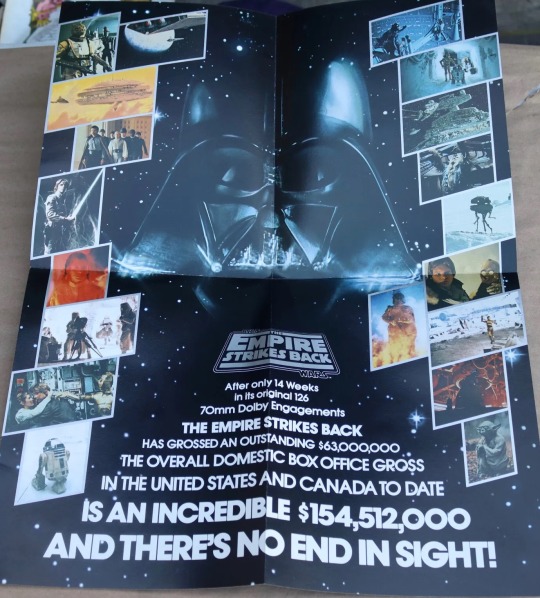

#Star Wars Episode V The Empire Strikes Back#Irvin Kershner#George Lucas#Leigh Brackett#Lawrence Kasdan#Mark Hamill#Harrison Ford#Carrie Fisher#Billy Dee Williams#80s
56 notes
·
View notes
Photo

Carlos Ochagavia’s 1976 cover art for The Nemesis from Terra, by Leigh Brackett
468 notes
·
View notes
Text

Vintage Pulp - Planet Stories (Fall1943)
Art by Jerome G. Rozen
Fiction House
#Pulp#Planet Stories#Science Fiction#Fiction House#Jerome G Rozen#Vintage#Magazines#Art#Illustration#Pulp Art#Pulp Illustration#Fantasy#CGC#Leigh Brackett#Clifford Simak#Nelson Bond#Henry Hasse#Wilbur S Peacock#1943#1940s#40s
8 notes
·
View notes
Text

Bifrost 105, cover by Nicolas Fructus
9 notes
·
View notes
Text

Jim Steranko's cover for The Hounds of Skaith by Leigh Brackett.
Yes, THAT Leigh Blackett, co-writer of The Empire Strikes Back (1980). She was a science fiction and screenwriter long before she became involved in Star Wars. She was also married to prolific science fiction (and sometimes comic book) writer Edmond Hamilton.
After a long break from science fiction, Brackett wrote the Skaith Trilogy (The Ginger Star, The Hounds of Skaith, and The Reavers of Skaith) in the mid-1970s. The trilogy reintroduced her most famous character, Eric John Stark, who can be described as a mixture of Tarzan and John Carter of Mars. Edgar Rice Burroughs was a huge influence on her, as he was for many, many writers.
While the above is a fine cover, Steranko followed the pattern of every other artist who drew Stark: he did not adhere to the character's description in the stories. Stark has Caucasian features, but his skin is burnt nearly pitch black from having been raised on Mercury and its close proximity to the sun.
Whether the discoloration was a result of instructions from the art director, or ignorance on Steranko's part, it's unfortunate that Stark was not depicted properly.
At least Planet Stories remedied this with their re-issue of The Ginger Star (I dunno if they released the other two books as well).
14 notes
·
View notes
Text

From Thrilling Wonder Stories, 1949.
I couldn't find the artist.
8 notes
·
View notes
Text
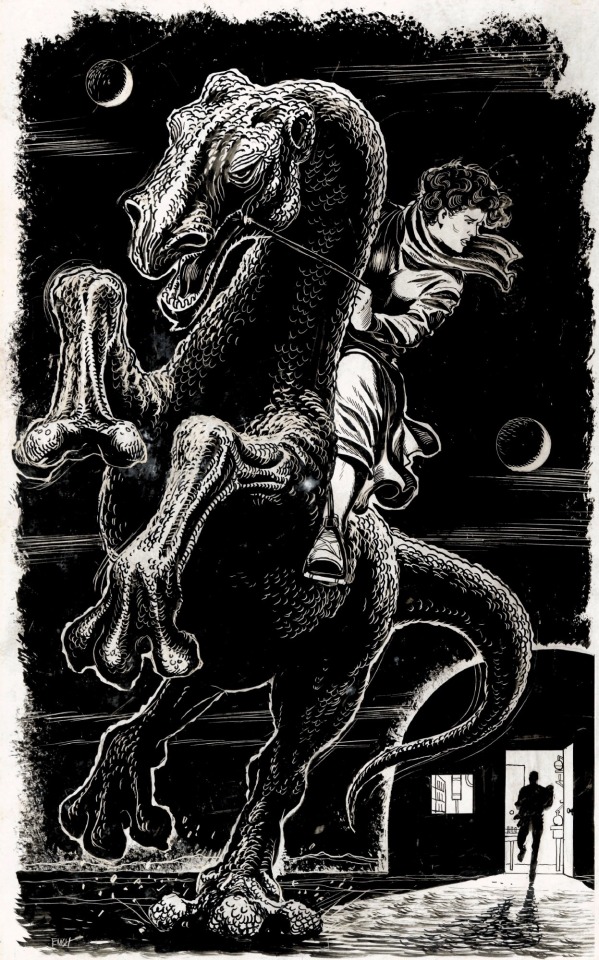
Ed Emshwiller - "Mars Minus Bisha" by Leigh Brackett, Planet Stories January 1954
Source
19 notes
·
View notes
Text

Charles Cyphers as Sheriff Brackett in Halloween (1978)
Watercolors on Paper, 8.5" x 11", 2024
By Josh Ryals
#charles cyphers#sheriff brackett#leigh brackett#halloween#halloween 1978#michael myers#haddonfield#fan art#original art#portrait#painting#watercolors#tribute#josh ryals art#joshua ryals art#joshryalsart#john carpenter#70s horror
2 notes
·
View notes
Text



vote yes if you have finished the entire book.
vote no if you have not finished the entire book.
(faq · submit a book)
4 notes
·
View notes
Text

The Long Goodbye, Robert Altman (1973)
#Robert Altman#Leigh Brackett#Elliott Gould#Nina van Pallandt#Sterling Hayden#Mark Rydell#Henry Gibson#David Arkin#Jim Bouton#Warren Berlinger#Stephen Coit#Vilmos Zsigmond#John Williams#Lou Lombardo#1973
4 notes
·
View notes
Photo
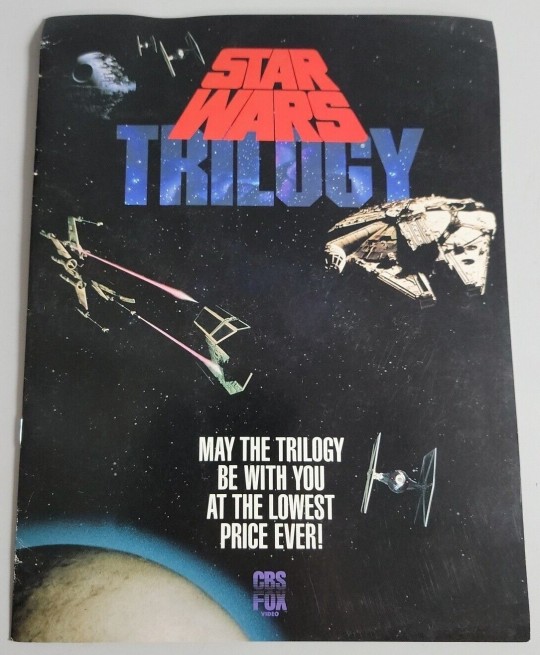




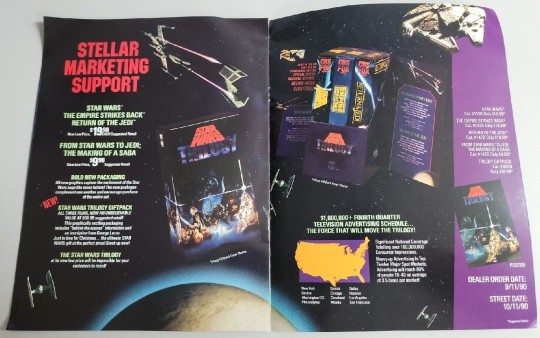
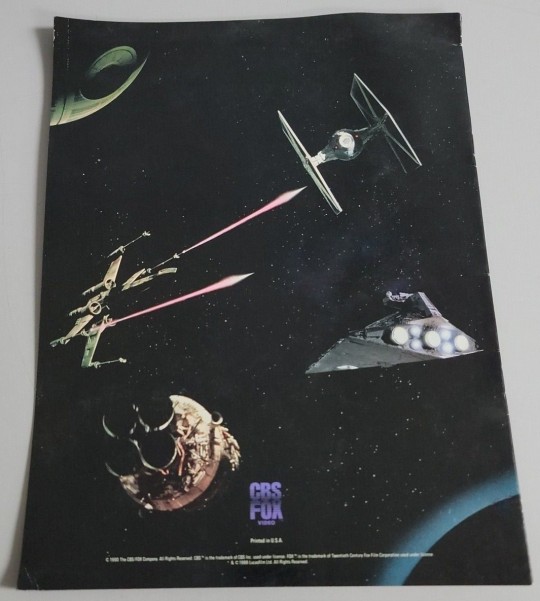
#Star Wars Trilogy#Star Wars#The Empire Strikes Back#Return of the Jedi#George Lucas#Irvin Kershner#Richard Marquand#Lawrence Kasdan#Leigh Brackett#Mark Hamill#Harrison Ford#Carrie Fisher#Alec Guinness#Billy Dee Williams#Peter Cushing#CBS FOX#70s#80s
221 notes
·
View notes
Text
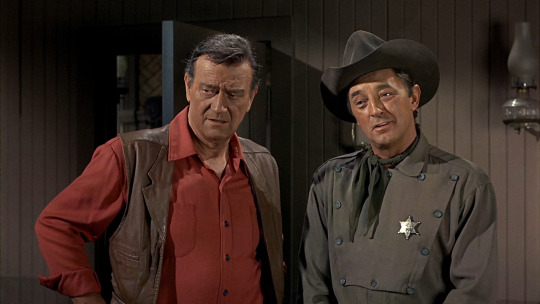
El Dorado (1966)
Pulp science fiction writer Leigh Brackett was an anomaly in the genre. Not only was she a woman, but she also crossed over into Hollywood sporadically. Alongside her novellas and serialized stories, her film credits are enviable: The Big Sleep (1946; okay, this film’s story never made sense, but its romantic dialogue is legendary), Rio Bravo (1959), and, posthumously, The Empire Strikes Back (1980). To Brackett, she deemed her script to 1966’s El Dorado, a loose adaptation of Harry Brown’s novel The Stars in Their Courses, as “the best script [she] had done in [her] life.” High praise for oneself, especially as one could easily interpret El Dorado as a lighter, slightly more comic version of Rio Bravo. El Dorado was Brackett’s fourth of five collaborations with director Howard Hawks (1938’s Bringing Up Baby; the four other Brackett-Hawks collaborations include The Big Sleep, 1948’s Red River, Rio Bravo, and 1970’s Rio Lobo). Brackett’s inventiveness and spiky dialogue makes even the more clichéd elements of the story more entertaining than they should be. Other than Hawks and the ensemble cast, it is Brackett who is most responsible for the film’s success.
Somewhere in the American West, cowboy Cole Thornton (John Wayne) rides into the town of El Dorado for a job offer from local landowner Bart Jason (Ed Asner). His longtime friend, Sheriff J.P. Harrah (Robert Mitchum) meets with him, quickly deduces the reason for Cole’s presence in town, and effortlessly persuades his friend to turn down the job (the mutual respect for each other – between the characters and between Mitchum and Wayne – is apparent from the moment they meet). Jason’s job for to Thornton included coercing, gently or otherwise, the MacDonald family to abandon their land and water rights. The MacDonalds are an honest family, Harrah says, and they have been the target of regular harassment from Bart Jason and his men. Over the rest of the film, Harrah, Thornton, elderly deputy Bull Harris (Arthur Hunnicutt), a youthful gunslinger named Mississippi (James Caan), and Dr. Miller (Paul Fix) find themselves further embroiled in Jason’s repeated attempts to violently force the MacDonalds out.
El Dorado’s large supporting cast also includes saloon owner Maudie (Charlene Holt, whose character has a hankering for Thornton); R.G. Armstrong, Christopher George, Johnny Crawford, and Adam Roarke as the MacDonald boys; and Michele Carey as the hot-tempered Josephine “Joey” MacDonald (Carey and Holt play two of the final examples of the “Hawksian woman”).
Comparisons to Rio Bravo are all but inevitable to cinephiles and fans of American Westerns. Where Rio Bravo is more of a movie where friends revel in each other’s’ vibes, El Dorado is squarely a story of aging cowboys whose foibles – Harrah’s alcoholism to drown his self-pity, Thornton’s first act spinal injury and free-roaming ways – may spell the difference between local tragedy and justice. Despite what she might say, Brackett’s script to Rio Bravo (co-written by Jules Furthman) is far tighter than El Dorado’s, which employs a momentum-killing six-month time skip just as its dramatic interest begins to pique (editor John Woodcock does not provide any assistance here). It takes just a tad too much time for El Dorado, which uses the time skip to introduce Mississippi and sideline Harrah due to his heavy drinking, to regain the dramatic interest it established in the opening third of the movie.
Both casts of Rio Bravo and El Dorado have advantages over the other. Rio Bravo boasts Walter Brennan and Ward Bond in supporting roles (yet I’ve never been too fond of Dean Martin’s performance). El Dorado has Mitchum (whose dynamic with Wayne is fantastic), Caan (miles better than a Ricky Nelson sticking out like a rock 'n' roll kid from the 1950s), and not enough Asner. The two films, to me, are similar in quality, and I vacillate between which is “better” (but, on a rewatch, I think I might prefer El Dorado)*.
The interplay between John Wayne and Robert Mitchum lies at the heart of El Dorado. In 2024, it remains fashionable to lambaste Wayne for not being able to act and “playing himself” – an accusation that has been around for decades. With more lightly comedic material than usual (I would not consider El Dorado a comedy, but there are good-hearted ribbings and wry situational observances that prevent this from being a pure dramatic Western), Wayne revives some of the comic timing from The Quiet Man (1952) to decent effect here, especially around Mitchum and Caan. But most compellingly, Howard Hawks directs Wayne in a way that acknowledges and plays against his on-screen persona as the accomplished Western hero. Thornton’s spinal injury in the film’s opening act sees him reckon with his mortality – in jest and in seriousness. Wayne’s delivery and his physical acting is striking to longtime viewers such as yours truly, as it is one of the first films in which Wayne must come to terms with aging and his growing fallibility, as well as his reputation for outgunning and outthinking his opponents. The seeds of what would be Wayne’s late career signature performances in The Cowboys (1972) and The Shootist (1976) begin to show themselves here.
Mitchum, perpetually sleepy-eyed and always my first choice to play a slovenly protagonist good with a revolver, is wonderful here as a sheriff with the romantic maturity of a teenager who unaccustomed to rejection. The duality of Mitchum’s Sheriff Harrah here – the fastest gun for miles around determined to uphold the law and the inebriated slob who retains a sense of humor that makes self-pitying and self-deprecation indistinguishable – is difficult to pull off, but Mitchum does exactly that. Mitchum and Wayne’s historical on-screen personas are not polar opposites, but there is nevertheless little overlap between the two aside for their marksmanship. In their only screen appearance together (the two both co-starred on 1962’s The Longest Day, but their scenes were filmed separately), it seems the two have known each other for ages. The subtle glances, the knowing facial expressions, and gentlemanly warmth in conversation bely the fact that this is their first film together. But for El Dorado, their rapport benefits the film magnificently.
Like his good friend Ernest Hemingway, Howard Hawks admired masculine competence, professionalism, and self-reliance. El Dorado rambles a little bit about duty, honor, and loyalty, but all of this surrounds the central tenants of male friendship found here and in Rio Bravo. It is the development of that friendship and simultaneous professional excellence, rather than any plot details, that concerns Hawks – and this is the frame through which he wants viewers to see this film. By his own self admission, Hawks stated that he was, “much more interested in the story of a friendship between two men” than anything else in El Dorado (including fidelity to the original novel). The range war between Jason and the MacDonald family lacks as much exposition as some might expect. Hawks and Brackett refuse to fully explain how the dispute started, as well as what the conflict has wrought during the film’s time skip.
Those who are not as competent or professional – in this film’s case, James Caan’s character of Mississippi – are simply comic relief until they can prove otherwise. For those aware of Hawks’ aversion to Fred Zinnemann’s High Noon (1952) – in which Gary Cooper’s Sheriff Will Kane spends almost ninety minutes going around town asking for help when he learns a few recently-released convicts are coming to murder him (Hawks, to my consternation, considered this cowardly and a disgrace to the Western genre) – El Dorado is yet another reaction against it.
Unlike Hemingway, Hawks (who was by no means a feminist) rejects Hemingway’s reductionist portrayals of women as “Dark” (submissive lovers) or “Light” (castrating man-killers). The female protagonists in Hawks’ films, too, demonstrate tremendous ability. The saloon keeper, Maudie, is perhaps the most keenly observant individual in the entire picture, and can pick out the psychology of a person whether she has known them for ages (such as our leads) or if they have just stumbled in for a drink. She may be the smartest person in town. Her fellow Hawksian Woman is the wild-haired Joey MacDonald (her hair feels at times like an anachronism airlifted from the 1960s, rather than a likelihood of the Old West), quick on a gun and with a quicker temper. There is not nearly enough attention on either character as previous Hawksian Women (nevertheless, we need to recall what Hawks wanted to concentrate on most here, and that’s male friendship), but what there is still improves El Dorado’s watchability aside from our two leads.
youtube
A worthy score from composer Nelson Riddle (1960’s Ocean’s 11, 1962’s Lolita) dials back the main theme more than one might expect from a midcentury Western, but it is still effective music for this film. Riddle is best known as an arranger and orchestrator for the likes of Frank Sinatra, Nat King Cole, and Linda Ronstadt, not a composer. Nevertheless, arrangers and orchestrators can learn composition through osmosis if they have not already been trained in music composition. Riddle’s liberal use of harmonica perfectly captures the setting, although his use of electric guitar/bass and discernible lack of harmonic identity (especially in the strings) feels too much like television scoring from this era – Riddle was the principal composer for the 1960s Batman television series starring Adam West. Instead, the score highlights revolve around uses of the main title song and its variations.
And what about that title song? Sung by George Alexander and the Mellomen, with lyrics by John Gabriel (Dr. Seneca Beaulac on ABC’s soap opera Ryan’s Hope), “El Dorado” fits the film perfectly, and Alexander’s rich baritone musically exemplifies the masculine themes of El Dorado. Strings double underneath the vocals, with the occasional woodwind and brass section and peaking out from the melodic doubling (again, one wishes for more harmonic interest here aside from doubling the melody). A snippet of the song’s lyrics reference to Edgar Allan Poe’s poem “Eldorado”; the poem itself is recited by Mississippi. “El Dorado” is nothing but an earworm, and I just wish it (and its variations) made more appearances in the film itself.
Though Rio Bravo had elements of a changing of the guard, El Dorado cannot help but feel, by its conclusion, as a generational marker, a near-last hurrah – intentionally or otherwise. This is not, like The Wild Bunch (1969) or Unforgiven (1992), a eulogy of the Old American West. In 1966, El Dorado came at a time when the great figures of Old Hollywood and the height of the American Western’s popularity (Wayne and Mitchum) were no longer the dominant forces in American cinema. The film’s title song even opens with oil paintings from Western artist Olaf Weighorst, of evocatively overcast vistas of the West, as if in reflection.
El Dorado would be Leigh Brackett and Howard Hawks’ penultimate collaboration and penultimate Western, with Rio Lobo a few years away. Their professional partnership, so unlikely given Hawks’ status in Hollywood and Brackett’s supposedly disreputable day job as a pulp science fiction writer, is maybe one of the most underrated and undermentioned in Old Hollywood history – one that spanned the height of Golden Age Hollywood to its final years. For El Dorado, Brackett, despite a few structural missteps, once again shows her gifts for dialogue and a keen understanding of Hawks’ directorial intentions. Hawks arguably improves upon his depiction of male camaraderie from Rio Bravo, allowing our protagonists to intuit their aging (some might say obsolescence). This is a sterling Western, if slightly out of time.
My rating: 8.5/10
^ Based on my personal imdb rating. My interpretation of that ratings system can be found in the “Ratings system” page on my blog. Half-points are always rounded down.
* As of this write-up’s publication, I have not seen Rio Lobo (1970), which forms an unofficial trilogy of Westerns with Rio Bravo and El Dorado.
For more of my reviews tagged “My Movie Odyssey”, check out the tag of the same name on my blog.
#El Dorado#Howard Hawks#John Wayne#Robert Mitchum#James Caan#Charlene Holt#Paul Fix#Arthur Hunnicutt#Michele Carey#Leigh Brackett#Ed Asner#R.G. Armstrong#Harold Rosson#John Woodcock#Nelson Riddle#Harry Brown#TCM#My Movie Odyssey
3 notes
·
View notes
Text

Vintage Pulp - Startling Stories (May1941)
Art by Rudolph Belarski
Standard Publications
#Pulp#Magazines#Starting Stories#Fantasy#Science Fiction#Leigh Brackett#Vintage#Art#Pulp Art#Pulp Illustration#Oscar J Friend#Standard Publications#Standard#CGC#1941#1940s#40s
3 notes
·
View notes
Text

"The Road to Sinharat" is available to read here
#short stories#short story#the road to sinharat#leigh brackett#20th century lit#english language lit#american lit#have you read this short fiction?#book polls#completed polls#links to text
3 notes
·
View notes
Text
Leigh Brackett's pulp SF stories are full of stuff like "hero & heroine flirt by giving each other facial scars" and planets whose dress code is "tits out always"
She also wrote the first draft of Empire Strikes Back.
imagine if Star Wars was allowed to be that horny. the hotness would make people's heads explode.
#star wars#leigh brackett#the empire strikes back#esb#empire strikes back#tesb#literature#science fiction#pulp sf#movies#film
2 notes
·
View notes
Text
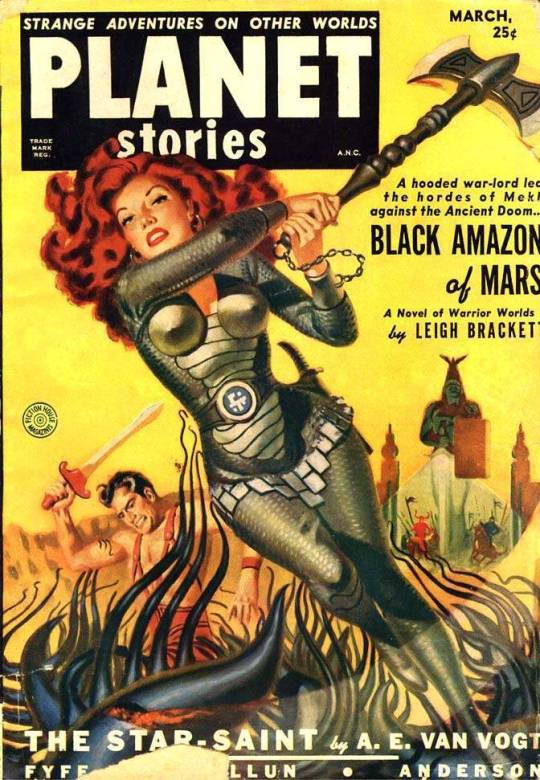
Planet Stories March, 1951 issue. Cover by Allen Anderson.
The cover story, Black Amazon of Mars by Leigh Brackett, was an Eric John Stark episode, his final appearance in a magazine until Brackett revived the character in the 1970s. The aforementioned Black Amazon, featured so prominently on the cover, begins as Stark's antagonist but ends up an ally.
The attitudes of the time did not allow for Stark (the guy with the sword) to be depicted as Brackett described him. Stark had Caucasian features, but his skin was almost pitch black from having been raised on the surface of Mercury with its close proximity to the Sun.
#Planet Stories#Black Amazon of Mars#Eric John Stark#Leigh Brackett#pulp magazines#science fiction#science fantasy
7 notes
·
View notes